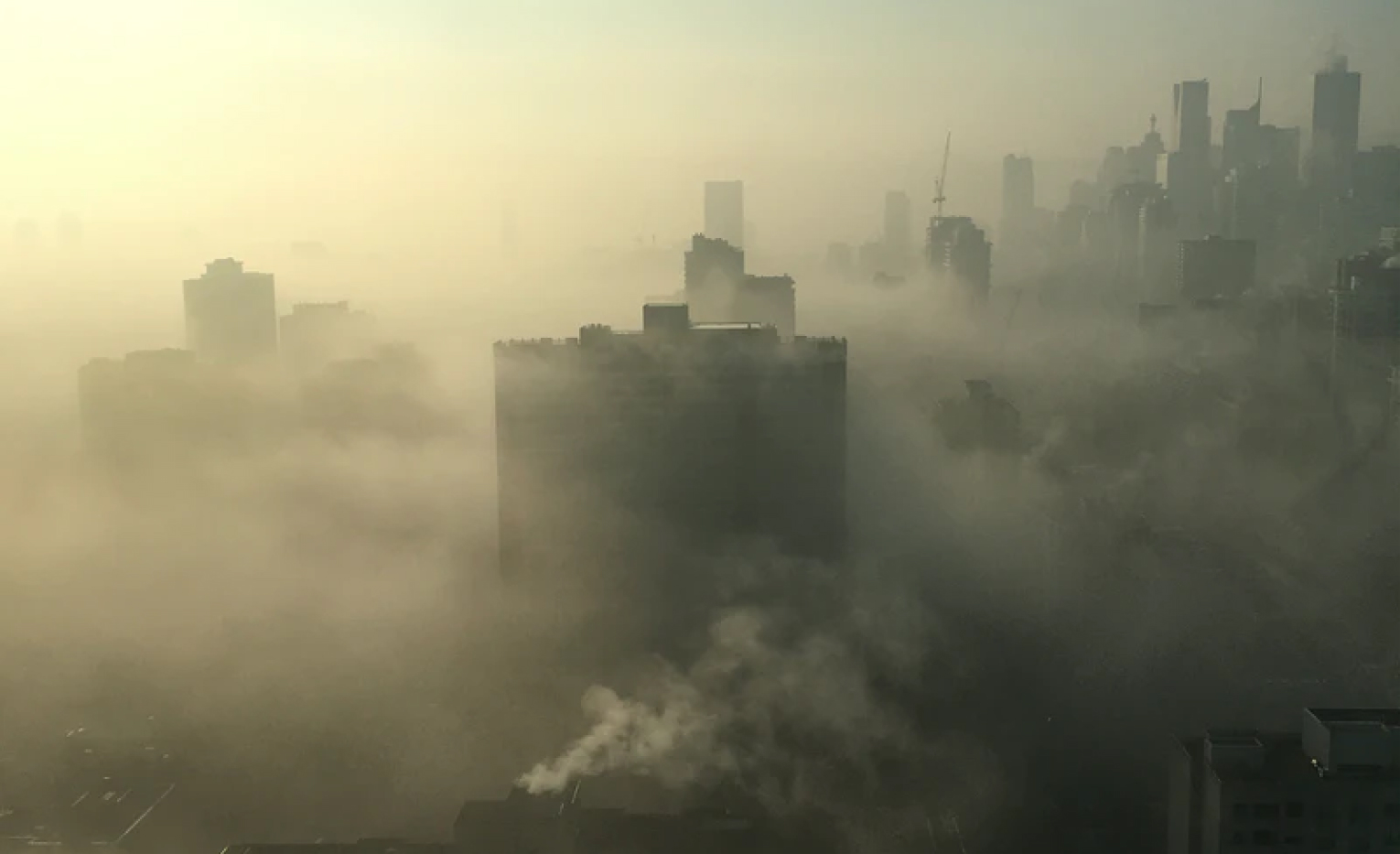Across the globe, nine out of every ten people are breathing unclear air.
Ultimately, around 7 million people die every year from diseases and infections related to air pollution – more than five times the number of people who die in road traffic collisions. Air pollution causes
0%
- of deaths from chronic obstructive pulmonary disease
0%
- of deaths from ischemic heart disease
0%
- of deaths from stroke
0%
- of deaths from lung cancer
- Exposure to air pollution has also been linked to increased vulnerability to COVID-19.
Types, sources and impact of air pollution
Air pollution is the result of gas and particle emissions, and the chemical reactions they have in the atmosphere. It can be caused by natural sources like volcanic eruptions, sea spray and lightning. But the majority is caused by five types of human activity: household, industry, transportation, agriculture, and waste.
Two types of pollution are particularly dangerous: fine particulate matter (PM2.5) and ground-level ozone. Invisible to the naked eye and present both indoors and out, PM2.5 penetrates lungs and allows toxic compounds into the bloodstream. Ground-level ozone is both a greenhouse gas and an air pollutant – damaging to human and ecosystem health. Exposure to ground-level ozone causes 472,000 premature deaths every year.
Deaths attributable to PM2.5 in 2017
- 0 < 10,000
- 10,000 < 40,000
- 40,000 < 100,000
- 100,000 < 500,000
- 500,000 < 852,000
- No Data
Climate Impact
Air pollution is inextricably linked to climate change. Although they remain in the atmosphere for a much shorter period of time than CO2, short-lived climate pollutants like methane, black carbon and ground-level ozone have an out-sized impact on global warming. Reducing them can cut the current rate of warming in-half. And because ozone reduces the growth of plants and forests, it also reduces the amount of carbon that can be sequestered – denying nature its most basic defense.
Methane
Sources: Agriculture, livestock, sewage and solid waste, oil and gas production
Effects: A main contributor to ground level ozone and relatedchronic respiratory illnesses
Black Carbon
Sources: Comes from diesel engines, burning trash, and stoves that burn fossil and biomass fuels
Effects: A powerful climate pollutant and fundamental part of PM2.5 pollution together causing poor health and premature death,and increases risk of dementia
Ground Level Ozone
Sources: Forms when pollutants from industry, traffic, waste and energy production interact in the presence of sunlight
Effects: Contributes to smog, worsens bronchitis and emphysema, triggers asthma, damages lung tissue, and reduces crop productivity and carbonuptake
Economic impact
The impact of poor air quality on global health is estimated at US$5.7 trillion – 4.8 per cent of the world’s GDP. It also has negative consequences for the economy, productivity, and tourism. It affects biodiversity loss, causes acidification of soil and lake ecosystems, and reduces forest and crop yields – threatening food security as the global population nears 10 billion.


Disparities
Pollution affects the poor disproportionately; with 90 per cent of air pollution-related deaths occurring in low- and middle-income countries.
Population density, waste generation and traffic concentration mean that pollution tends to be greater in urban areas in general. But while half of high-income cities fail to meet World Health Organization air quality standards, almost all low- and middle-income countries fail to meet them – with south Asia, western sub-Saharan Africa and east Asia exposed to the greatest levels PM2.5
In their own homes, about 3 billion people use unclean fuels and air-polluting appliances, inhaling deadly smoke, day after day. In spite of overall progress, this remains almost exclusively the problem of less developed countries.
Proportion of population regularly using clean cooking fuels and technology
- 15%
- 27%
- 49%
- 50%
- 67%
- 76%
- 88%
- 91%
- 95%
The very young and old are particularly vulnerable. In addition to respiratory infections and diseases, exposure to pollutants can affect the brain – causing developmental delay, psychological and behavioural problems and even lower IQ in children. Meanwhile, in older people, air pollution is associated with Alzheimer’s and Parkinson’s disease.
Global commitments
In more than 155 countries, a healthy environment is recognized as a constitutional right. Obligations related to clean air are implicit in the Universal Declaration of Human Rights and the International Covenant on Economic, Social and Cultural Rights.
The 2030 Agenda pursues Sustainable Development Goals with a view to “leave no one behind” and the Paris Agreement requires parties to report their progress in limiting global temperature increases.
Actions taken by governments to promote better air quality
Of 193 countries:
have increased household access to cleaner burning fuels to over 85 per cent.
have incentivized investment in cleaner, renewable energy and pollution control.
have significantly expanded or upgraded public transport systems in the past five years.
have established alternatives to open burning of agricultural and/or municipal waste.
In spite of these ambitious goals, 39 per cent of people still breathe polluted air in their own homes, and only half of the world’s urban population has convenient access to public transportation.
There is still more investment in fossil fuels than in climate activities and last year was the second warmest year ever recorded. Without reducing both short-lived climate pollutants and CO2 emissions, there is simply no way the world can reach its 1.5°C target.
Improving air quality is achievable and provides numerous human and environmental benefits – mitigating climate change, increasing life expectancy, improving health and sustaining development. And the countries that are currently most exposed to PM2.5 also have the most to gain – meaning that improving air quality is also a way to address global inequality
Years Lost In Relation to Air Pollution
- 0 < 0.5
- 0.5 < 0.76
- 0.76 < 1.02
- 1.02 < 1.33
- 1.33 < 1.87
- No Data
International Day of Clean Air for blue skies
International Day of Clean Air for blue skies is a global call for action toward a single, unifying objective: clean air for all.
On 7 September, it will be celebrated for the first time ever, urging countries to work together to tackle air pollution until every person in every part of the world breathes clean air.
Call to action
Clean Air for blue skies invites us all to change the way we live and reduce the amount of air pollution we produce.
This means learning about the sources of pollution in their own countries; taking responsibility for our actions; and holding governments, industries and businesses accountable for theirs.
We all have a right to breathe clean air. And we have the power to create change – as producers and consumers, as global citizens and decision-makers.
How will you ensure clean air for all? Use the hashtag #CleanAirForAll and show the world.